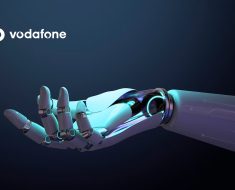Artificial Intelligence (AI) has myriad use cases in artistic, academic, and social applications, among others. These deep learning resources naturally evoke strong feelings from audiences, ranging from awe to exasperation.
This cutting-edge technology is supremely capable of learning, adapting, and improving with every iteration. A powerful concept put into practice, AI language generators are many years in the making.
These tools have an outsized impact on the IoT with an ever-expanding library of online and in-person use cases. Granted, literary scholars, artists, educators, and practitioners are rightly concerned about AI language generators’ impact on the world.
Some folks feel that these smart-tech tools are displacing human creativity, thought, and deed.
Musicians, artists, scholars, and influencers routinely dabble with AI technology to draw inspiration. Most everyone agrees that these powerful resources should not supplant the human element; they should complement it, provide guidance, and engender a spirit of creativity, originality and foster ingenuity.
Misuse of AI technology can have disastrous implications for society, particularly with the spread of misinformation, misattribution, or malicious content.
There will always need to be checks and balances, oversight, and human intervention whenever AI technology is in use. This is certainly not an indictment of the innate powers of AI; it’s more of a control and audit function to fine-tune the specifications.
Introducing ChatGPT AI-Language Generator
Text-generative artificial intelligence systems such as ChatGPT are commonplace, with dozens of similar algorithmically powered software programs readily available. This particular AI language generator can be used to enrich and elevate the quality of content in many different applications.
Whether it is art, film, or academic papers, AI language generators are fast becoming the go-to online assistant. Indeed, there are potent applications for such software, and AI is a boon when used correctly.
It is ideally suited for use in applications requiring automation, writing intelligent copy, tailoring material to expectations, and drafting content for specific target markets.
ChatGPT is a beautiful work in progress. But avid writers, researchers, artists, and academics can easily spot non-human-sounding text. This artificial intelligence language generator is often the victim of its own handiwork since it attempts to provide near-perfect content on every iteration.
Overly long sentences and the absence of the correct register, diction, tone, style, and structure are dead giveaways. The human element is what sells content through marketing, advertising, TV, film, and audio.
While it is certainly possible to provide goalposts for AI software, it cannot escape the fact that AI software is indeed creating material for human consumption. That’s why it is based as a supplementary tool for generating ideas.
Naturally, skeptics are quick to reject the use of AI language generators. They fear that the content will be incorrect or inappropriate and that the programs are incapable of understanding complex thoughts, emotions, and requirements.
We now know that is not the case. AI language generators can be tailored to specifications and they do a surprisingly good job of churning out high-quality material. They have indeed encouraged a revolution in how creative, academic, and social content is generated.
Beyond the basics, AI language generators are useful resources for out-of-the-box ideation, intelligent calculation, and multiple other disciplines. The world is richer for artificial intelligence language generators and the revolution they have spurred.
The AI Boom – A Revolution Unfolding in Real-Time
AI is part of a much broader technological boom sweeping across the Internet. We see evidence of this in multiple related industries.
This is particularly true in entertainment (film, TV, advertising) where AI language generators, voice synthesis and complementary technologies are used greatly. Many such examples abound, notably splicing technology, editing technology, voice over technology, storytelling adaptations, etc.
Adaptive learning with natural language processing capabilities certainly put an entirely different spin on proceedings. For example, high-quality voice-overs can be created for video introductions, portraying a character’s innermost thoughts, or merely creating an impact.
Typically, the creative minds of a team of writers would be required to analyze the broad story and context within which the voice-over would be created. Now, generative AI language tools can be used to rapidly assess the proverbial lay of the land and create the necessary content based on context and requirements.
Additionally, technology is now readily available to voice the voice-over, eliminating all the requirements of a veritable home-based studio replete with a microphone, soundproofed room, and the like.
A powerful AI system can deliver an exemplary speech, or voice over, and the technology is only improving as we barrel into the future. When paired with attendant applications, software, features, and functions, AI language generators are leading a revolution of change. And we’re only on the cusp of what’s possible – watch this space!




